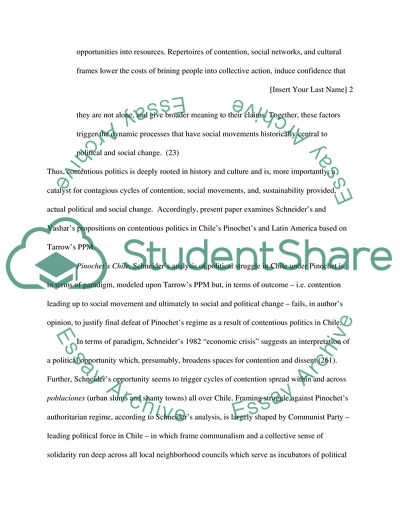Cite this document
(“Do Schneider and Yashar utilize Tarrow’s Political Process Model Essay”, n.d.)
Do Schneider and Yashar utilize Tarrow’s Political Process Model Essay. Retrieved from https://studentshare.org/miscellaneous/1558674-do-schneider-and-yashar-utilize-tarrow8217s-political-process-model-to-explain-social-movements-in-latin-america-how-do-they-utilize-the-ppm-what-do-they-each-add-or-remove-from-the-ppm-how-successful-are-they-each
Do Schneider and Yashar utilize Tarrow’s Political Process Model Essay. Retrieved from https://studentshare.org/miscellaneous/1558674-do-schneider-and-yashar-utilize-tarrow8217s-political-process-model-to-explain-social-movements-in-latin-america-how-do-they-utilize-the-ppm-what-do-they-each-add-or-remove-from-the-ppm-how-successful-are-they-each
(Do Schneider and Yashar Utilize Tarrow’S Political Process Model Essay)
Do Schneider and Yashar Utilize Tarrow’S Political Process Model Essay. https://studentshare.org/miscellaneous/1558674-do-schneider-and-yashar-utilize-tarrow8217s-political-process-model-to-explain-social-movements-in-latin-america-how-do-they-utilize-the-ppm-what-do-they-each-add-or-remove-from-the-ppm-how-successful-are-they-each.
Do Schneider and Yashar Utilize Tarrow’S Political Process Model Essay. https://studentshare.org/miscellaneous/1558674-do-schneider-and-yashar-utilize-tarrow8217s-political-process-model-to-explain-social-movements-in-latin-america-how-do-they-utilize-the-ppm-what-do-they-each-add-or-remove-from-the-ppm-how-successful-are-they-each.
“Do Schneider and Yashar Utilize Tarrow’S Political Process Model Essay”, n.d. https://studentshare.org/miscellaneous/1558674-do-schneider-and-yashar-utilize-tarrow8217s-political-process-model-to-explain-social-movements-in-latin-america-how-do-they-utilize-the-ppm-what-do-they-each-add-or-remove-from-the-ppm-how-successful-are-they-each.


